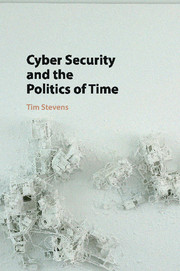Book contents
- Cyber Security and the Politics of Time
- Cyber Security and the Politics of Time
- Copyright page
- Dedication
- Contents
- Book part
- Introduction
- 1 Cyber security, community, time
- 2 Towards a politics of time
- 3 Diagnosing the present
- 4 Imagining the future
- 5 Arguing through the past
- 6 Inhabiting the future
- 7 Cyber security and the politics of time
- 8 Conclusion
- References
- Index
- References
References
Published online by Cambridge University Press: 05 October 2015
- Cyber Security and the Politics of Time
- Cyber Security and the Politics of Time
- Copyright page
- Dedication
- Contents
- Book part
- Introduction
- 1 Cyber security, community, time
- 2 Towards a politics of time
- 3 Diagnosing the present
- 4 Imagining the future
- 5 Arguing through the past
- 6 Inhabiting the future
- 7 Cyber security and the politics of time
- 8 Conclusion
- References
- Index
- References
- Type
- Chapter
- Information
- Cyber Security and the Politics of Time , pp. 211 - 257Publisher: Cambridge University PressPrint publication year: 2015

